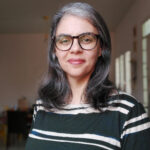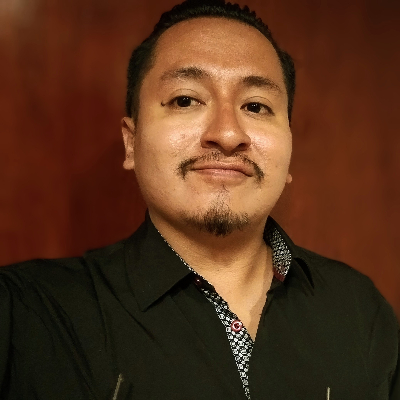Editor’s Note: This essay is available exclusively in English and Portuguese. Click here to read in Portuguese.
Invitation and Provocation
In the first days of April 2021, when Brazil became the epicenter of the global pandemic crisis, the arts tried to survive not only a virus that devastated the planet but also the social and economic difficulties provoked by this problem. The arts also resisted governmental attacks from a regime that denied the global health crisis, contrary to science and, above all, an enemy to the arts and humanities. Artists from the fields of music, dance, theater, and literature, without facilities for their cultural production and with great effort, invented ways of creating, of finding their audiences, of offering poetry and songs as much as possible in an unstable context.
Livestreams and more livestreams appeared; dance and theater shows occurred on screens through new experiences of production and interaction; vocalists and orchestras occupied small screens; poets and narrators spoke and read their works during encounters transmitted on social media platforms.
It was in this context of sudden mediations and creative—forced—options that I received an invitation from Galpão Cine Horto. Chico Pelúcio—filmmaker, actor, and cultural promoter—invited me to collaborate as the curator of poems and poets in a program of videos for the Galpão Youtube channel. Galpão is one of the largest and most respected theater groups in Brazil and Galpão Cine Horto is a well established and important cultural space in the city of Belo Horizonte, capital of Minas Gerais state in Brazil’s southeastern region.
Verse and Voice is the name of this video program, and its goal is to present the work of poets from Minas Gerais through readings by Galpão’s actors and actresses. The videos would be around five minutes long, depending on the length of the work. So, my duty was to select five poets from Minas Gerais, all women, and to propose five poems to be read by members of the theatrical group.
Curators and Bravery
Mineira poetic production is dense, unstoppable, continuous, and intense. It is impossible to talk about Brazilian literary history without reviewing significant authors and movements from Minas Gerais, starting at least from the eighteenth century. Historically, the number of women writers has grown in line with the rise of feminism and the fight for women’s rights. In the present day, countless women poets write and publish throughout the country. Minas Gerais is one of the most representative centers of contemporary poetry in Brazil, as Ana Martins Marques’s work shows us. She was one poet included in the first season of readings transmitted through the Galpão Cine Horto’s channel.
My task as curator was, therefore, to research the women protagonists of poetic production from Minas Gerais, selecting five names and their poems. With these texts, the theater group planned to produce new seasons of their video program. Between speaking and recitation, the readings took place according to each actor or actress’s interpretation—a fact on which my task as curator had no bearing. My selection dealt with a previous phase, that is, the strenuous responsibility of choosing just five names from the vast list of women poets of Minas Gerais state, trying to show with their works a sense of the vitality and diversity of Mineira poetry.
Five Essential Poets from Myriad Voices
What is a literary curator’s job? Specific parameters influence the selection, of course, but to what extent is it possible to alternate or subvert proposals and new viewpoints in a literary field?
Broadly speaking, it is not difficult to choose famous names for a literary project. Evident references are there and are inevitable; well-established authors are waiting for a predictable invitation. From this vantage, a curator does not have too much work to do. Events such as book fairs, festivals, roundtables, and other activities occur numerous times per year in many parts of the country without bringing any novelties to the scene. If the purpose is to take references from popular women writers who edit in massive publishing houses, whose marketing power has no competitors, then the curator’s task demands minimal effort.
By contrast, it seemed to me that my duty was different. My job was something like giving voice and space to women writers who produce notable works, poetry varied in its diction and its uses of language, but who aren’t always visible. The examples are many, uncountable, and here the curator’s efforts became a serious research project that demanded time for investigating, reading, and selection. Beyond technical aspects regarding the poetic production of each poet, it was interesting—but not mandatory—to imagine a geographical organization with less emphasis on the capital, and to review electronic magazines and books published by small publishing houses with limited distribution.
Must the poetic voices of these women all sound at the same time? What are these poetic styles? Was variety a good option? What is the relationship between my selection and the geography, age group, sexual orientation, or race of each poet? Based on this reflection, we might easily criticize the notion of “extra-literary criteria,” an argument often proposed by persons who try to preserve the establishment. In any case, even considering all these important categories, an initial parameter must emerge. This parameter was the poetic creation of the authors.
Five Poets and Their Voices
After researching in specialized sites, active literary magazines, many pages published by independent publishing houses, and print books, I landed upon five women whose poetic production resonates in a literary field below the surface, that is, on a horizon that demands a certain immersion into the boiling waters of contemporary poetry that almost never reaches the “mainstream.” I mean to say that these five writers publish books with minor publishing houses, they are regularly active on social networks, they take part in festivals and anthologies either in Brazil or abroad, and their works frequently appear in translation. Furthermore, they work not only on poetry, taking part in collectives and activities as editors, curators, and organizers. In this vein, I suggested to Galpão Cine Horto the following Mineira poets (in chronological order by birth): Líria Porto, Ana Caetano, Adriane Garcia, Nívea Sabino, and Ana C Moura.
Beyond a shared birthplace in Minas Gerais and the act of writing poetry, what brings these women writers together is a contemporary and vital poetic voice that takes part in the same scenery, but not always in the same micro-folds. Their verses, practices, and attitudes distance and connect themselves according to their performances. For example, Adriane Garcia and Nívea Sabino, despite their different ages and poetical DNAs, have a similar use of the spoken and uttered word, engaged and engaging, a brave tone like a manifesto with more emphasis here or there. Líria Porto, the oldest poet of the group, presents poems with a frequently ironic voice. She also manifests a notorious feminist temper, but not in a pamphleteering tone, in my view. In this regard, Líria shares a tendency with Nívea and Adriane. Ana Caetano, a professional scientist, has been a literary activist for many years. Her work reminds us of mimeograph poetry from decades ago, without losing the fresh sensation that she writes poetry in the present day. This “today” is more radical in the voice of the youngest, Ana C Moura. This author has not published a book yet, but she is an active member of poetic collectives in western Minas Gerais state, weaving interchanges with the rest of the country through the portal Fazia Poesia, where she publishes poems.
These five women, authors of a strong and persistent poetry, different in their origins, sexual orientations, ethnicities, ages, and activisms, constitute a set of creators who are just the tip of the iceberg—one which, unfortunately, readers do not always perceive because of their disinterest in seeking and immersing themselves in areas beyond the obvious and the evident. Here I suggest no demerit toward authors who keep their positions in places of great visibility. But these authors are a minority, and their works provide only a vague idea of the production taking place in other orbits of Brazilian literature today. As we know, generosity is not a frequent characteristic in the literary field—or in other human environs—under normal conditions of pressure and temperature.



